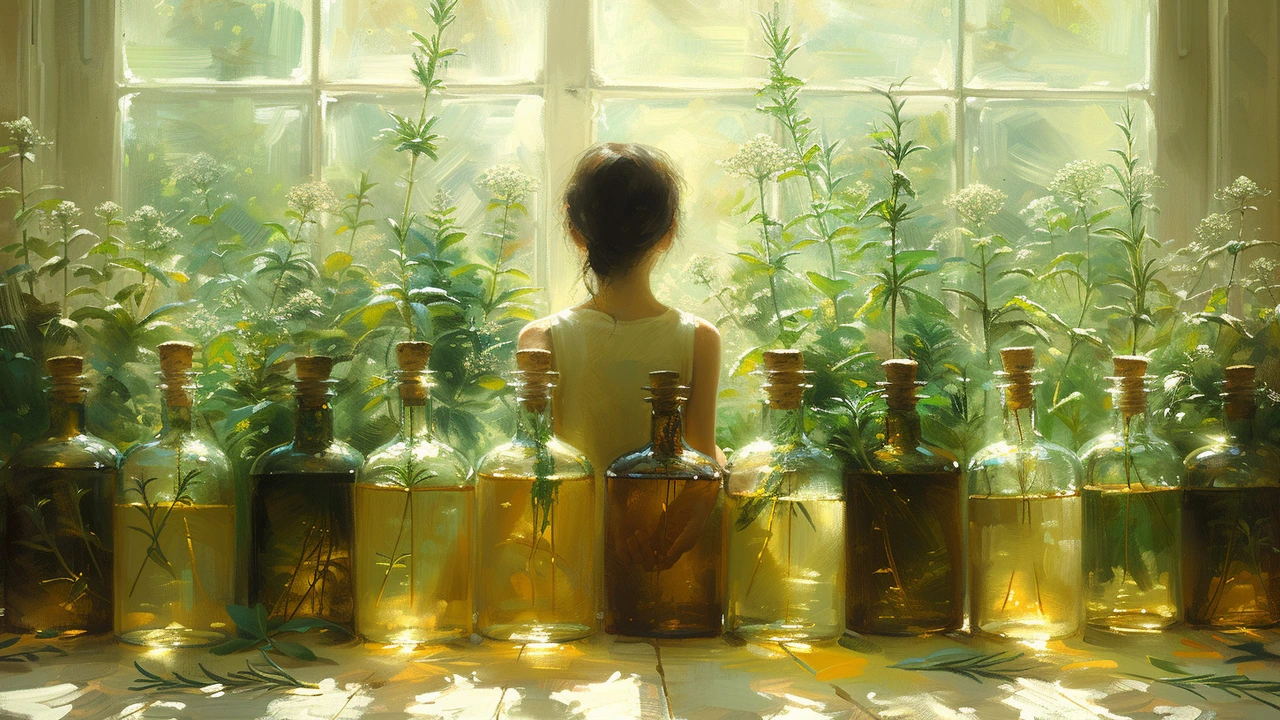Discovering the World of Aromatherapy
Picture this: a long, demanding week has finally drawn to a close. The nightly chorus of crickets is serenading the onset of dusk outside your window. Your tired body sinks into a plush armchair as the soothing scent of lavender wafts through the air, lifting your spirits like the gentle flutter of a butterfly’s wings. Aromatherapy, folks, is what I'm talking about. For many of us, our first introduction to aromatherapy rests on such images—a warm, indulgent bubble bath infused with the smell of rosemary or maybe a tranquil yoga studio perfuming with the spicy notes of sandalwood.
The concept of aromatherapy is as intoxicating as it is mysterious. But what does it truly entail? My objective is to deliver, as seamlessly as a yacht sailing on a still ocean, the fundamental knowledge and understanding you need to navigate the nebulous seas of aromatherapy. Stick around, and you'll soon learn how to decode the essence of essential oils, the art of blending fragrances, and effective methods to use aromatherapy in everyday life.
Essence of Essential Oils
The kernel of aromatherapy resides in essential oils—highly concentrated plant extracts obtained typically through distillation or cold pressing. They carry the lifeblood of the plant, the very soul of it, encapsulating the plant’s therapeutic properties and delightful aromas into a liquid so potent that a single drop could fill up an entire room with its fragrance.
It's funny when you think about it, how our forebears discovered the value of these oils. Picture a caveman accidentally squashing a piece of peppermint underfoot and witnessing the aromatic explosion it brought. Fast forward several millennia, and today we have a library of over 100 varieties of essential oils, each boasting its unique aroma and therapeutic properties.
In an interesting twist, my early tryst with essential oils wasn't particularly fond. As a teenager, I found myself dabbling in making my own natural deodorant which called for, amongst other things, essential oils. In my naivety, I underestimated the potency of these oils and ended up with a concoction so strong it could make a scent hound run for the hills! Lesson learned: a little goes a long way.
Blending the Fragrances: The Art and Science
Combining different essential oils to create a unique blend isn’t just an art—it’s an intimate form of self-expression. It's like painting a picture, only instead of using brushes and pigments, we use our sense of smell and an array of fragrant oils.
Like a well-structured novel, a successful blend of essential oils comprises a beginning (top note), a middle (heart note), and an end (base note). Top notes are typically light and fresh and serve as a delicate introduction to the blend. The heart notes soon follow, constituting the body of the blend. Finally, the base notes, heavy and long-lasting, bring the experience to a satisfying end.
This magic of blending reminds me when, as a bigger boy, I decided to make a fragrance for my dear mother for her birthday. It was a patchwork of floral-scented oils—jasmine, rose, ylang-ylang—with a dash of vanilla. Despite my amateur status, the end result was surprisingly good or so I would like to believe considering the smile that graced my mother's face when she sniffed the bottle.
Aromatherapy in the Everyday
Aromatherapy can be woven intricately into our daily life; it isn't just a luxury indulged in at lavish spas or yoga retreats. Picture a warm bath scented with lavender and eucalyptus after a particularly tiring day or a refreshing burst of citrusy morning energy in the form of a grapefruit-infused face wash. The possibilities are boundless, much like the universe itself.
Essential oils can be used in diffusers to create a relaxing ambiance, applied topically onto the skin, or simply inhaled directly from the bottle. Each method offers its benefits, and each paints a distinct aromatic portrait. From soothing stress to enhancing concentration, to even promoting better sleep, incorporating aromatherapy into your everyday routine could very well be your ticket to balanced well-being - a gentle reassurance to your senses that all's well in the world.
Beyond Relaxation: The Therapeutic Benefits
While relaxation is often the primary end associated with aromatherapy, its benefits are not confined to the soothing of frazzled nerves. A study conducted to gauge the efficacy of aromatherapy in managing pain concluded that patients who were exposed to the fragrance of lavender oil reported a significant decrease in pain as compared to those who were not.
An encounter from my life strikingly illustrates this. A few years back, I suffered a nasty bout of migraine that seemed impervious to all conventional remedies. Out of desperation, I turned to peppermint oil, which I came to know possesses analgesic properties. As I inhaled the sharp, minty aroma of the oil, a cool sensation washed over me, and I could feel the iron vice gripping my temples loosen. The incident marked my foray into the realm of aromatherapy, and there has been no looking back since.
In the vast, fascinating world of aromatherapy, what you stand to gain is balance—the harmonizing of mind, body, and soul to the rhythm of nature. The next time you find yourself ensnared in the throes of a day painstakingly long, remember, relief is but a sniff away.
